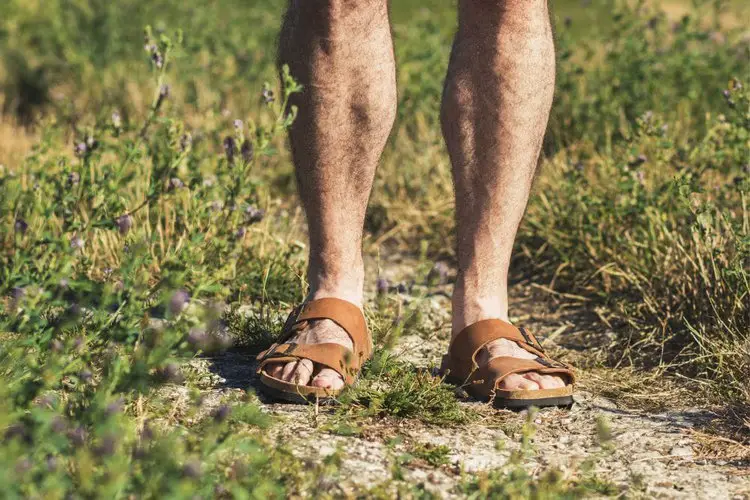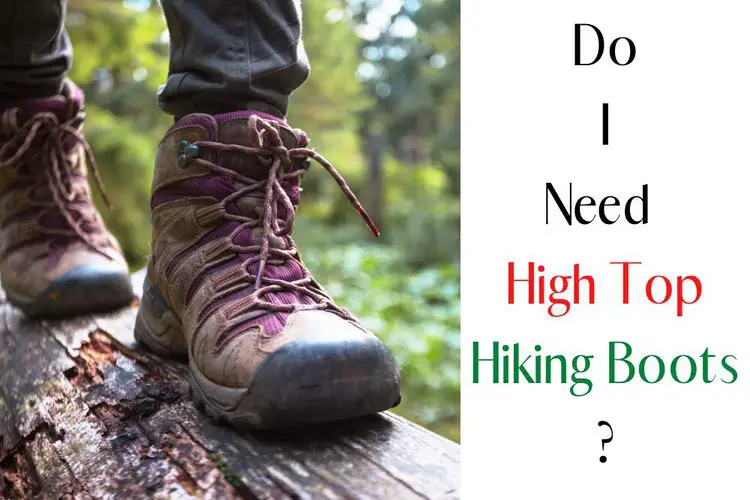Well, before this article, let’s briefly review the benefits of high-top hiking boots compared to mid-cut, low-cut sandals or running shoes.
Overall, the most outstanding features of high-top hiking boots are that they will better protect your ankles with the padding collar. Thus, they keep you warm all winter, and prevent rain, debris, gravel, and rocks from getting inside.
Those features will protect hikers better during long journeys with steep, rocky, slippery, and dangerous terrain. And they also ensure that the wearer is more comfortable in nasty environments with lots of rain, snow, or sand.
The truth, though, is that you don’t have to wear high-top hiking boots all the time. For many hikes, you’ll need different types of footwear to get the most out of your trip.
Today’s article will tell you if you really need high-top hiking boots or not. And why? when?
Let’s check it out!

Do I Need High-Top Hiking Boots?
In fact, you should only wear high-top hiking boots for really difficult terrain such as rocky slopes or inclement weather such as snow, rain, or scorching heat (desert).
High-top hiking boots often provide ankle support to stabilize your ankle, allowing you to cross treacherous slopes while keeping your ankle safe.
Besides, this type of hiking boot often comes with a padding collar that hugs your ankle, which ensures you stay warm in the winter and won’t be scorched by the summer sun.
Also, the padding collar of many high-top hiking boots can prevent debris, gravel, or water, from falling in.
The good height of the high-top hiking boots also ensures that your feet are safer from the attack of some small animals such as snakes, scorpions, etc.
However, hiking does not always have to be through difficult terrain, sometimes your trips are simply just excursions through beautiful lands. For places with flat, simple terrain and favorable weather, you may not need to use high-top hiking boots at all.

The advantages of high-top hiking boots are sometimes their weaknesses. With their tall and thick construction, they are definitely heavier.
In addition, high-top hiking boots are also less breathable than mid-cut or low-cut hiking boots, running shoes, or hiking sandals.
For beautiful trails with a great climate, you’ll be able to feel everything with minimalist hiking footwear, not with high-top hiking boots. Simply because, in this case, you don’t really need ankle support, padding collar to prevent objects from falling in, or high construction to prevent snakes or scorpions.
Therefore, you do not have to wear high-top hiking boots on every trail.
In flat, less slippery, less steep terrain with great weather, climate and high safety, you can totally ditch the high-top hiking boots and use mid or low cut versions (or other simpler footwear) with no problems at all.
Last update on 2023-11-11 / Affiliate links / Images from Amazon Product Advertising API
Accessories like high-cut hiking boots may be necessary to protect you in some of the conditions mentioned above, but they sometimes are also the things that prevent you from getting stronger.
Some studies show that using low-rise hiking boots with almost no ankle support will help your ankles become more flexible and stronger. Over time, you’ll be able to traverse difficult terrain more quickly and comfortably.
Therefore, for terrain that is not really too difficult, you should try using mid-cut, low-cut hiking boots or shoes with less ankle support. That will train your ankle better.
Of course, make sure you take every step and warm up carefully to avoid unfortunate foot injuries.

Another caveat is if you have a history of ankle sprains and have not fully recovered. Then for the challenging terrain, you should wear high cut hiking boots. They will help stabilize your ankle and not affect the recovery process much.
If you are new, you should start hiking on easy trails, and then gradually increase the level as you become proficient.
It would be wise to research the entire journey ahead, including the terrain, weather, environment, etc. before you actually embark on the journey.
Knowing the above ensures that you will be able to decide whether to wear high-cut hiking boots or not. Follow our lead and make your decision.
Conclusion

In general, you should only use high-top hiking boots on steep and challenging terrain that can affect your ankles.
Or when going through cold snowy roads or burning sun, high-top hiking boots are really good armor to protect your feet against unfavorable environments and weather.
High-top hiking boots are also really suitable when you have had foot injuries that have not fully recovered. They will make your ankle more stable.
But, if you go on a hike in an easy plain with a nice climate, then high-top hiking boots aren’t really necessary. You can choose lower hiking boots or more minimalist footwear for a better journey.
Good luck!


